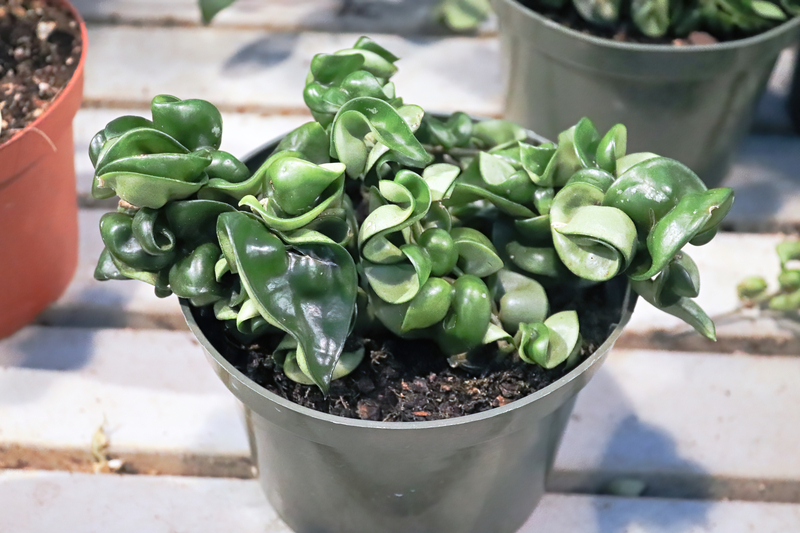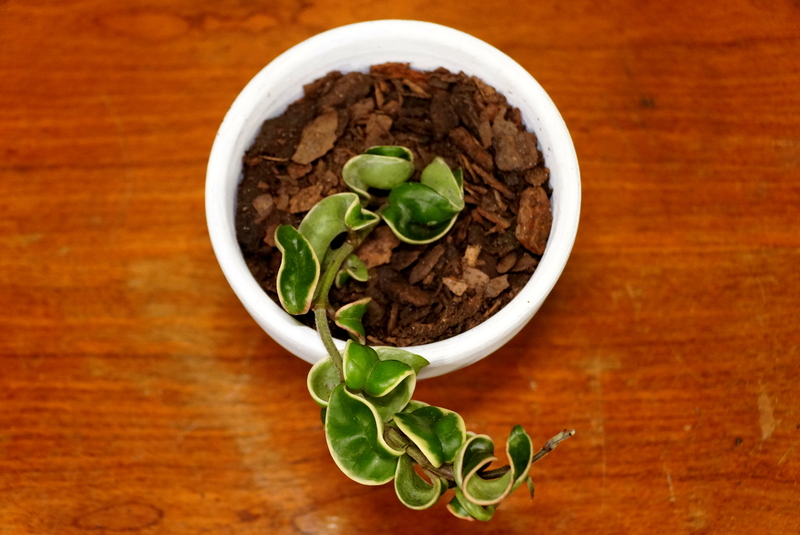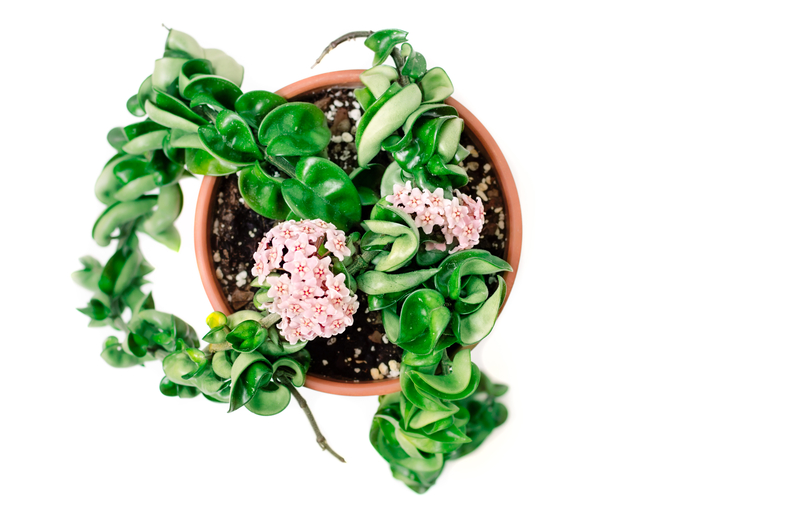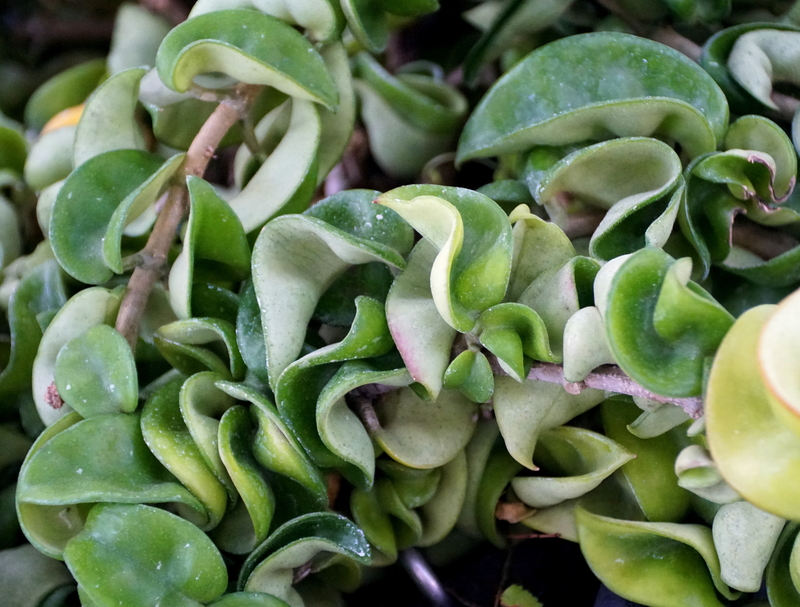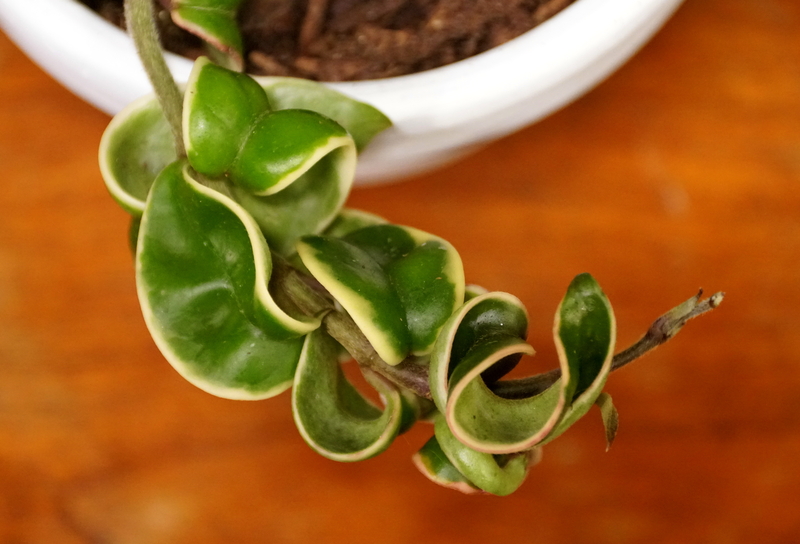The Hoya Compacta plant is native to Southern India and Australia. This slow-growing plant presents draping vines resembling thick ropes, making a great addition to a hanging basket in your home or office. Here is how to take care of this plant!
Other Names
- Hoya Rope Plant
- Krinkle Kurl
- Hoya Carnosa Compacta
- Hoya Compacta
- Porcelain Flower
- Wax Plant
What Potting Soil Works Best for Hindu Rope?
As with many house plants, the Hindu Rope needs fast-draining soil. In addition, this plant is familiar with growing in the air, so make sure to keep your soil lightweight. Finally, you can add multiple organic materials to the soil for this plant.
- Pine Bark
- Sphagnum Moss
- Clay Pellets
- Pumice Pebbles
- Perlite
- Coconut Coir Chips
- Loam-Based Compost
- Orchid Bark
- Peat
Can You Use Fertilizer?
You can use a monthly feeding of diluted water-soluble fertilizer high in potassium. However, too much fertilizer will appear in several ways around the foliage and vines. In severe cases, you will notice dry leaves, new growth will be small, and the tips of vines will die off. If this occurs, flush the soil with water and report if necessary.
How Much Sunlight Does a Hindu Rope Plant Need?
The Hoya Rope Plant does well with bright, indirect sunlight. And though this plant can survive in low-light conditions, especially the varieties with solid green leaves, it is best to keep it in bright light conditions of a south-facing window. If you place it in direct sunlight, you may notice that the leaves will begin to burn, which is neither good.
What Temperature Works Best for Hindu Rope Plant?
It is best to have temperatures above 70 degrees during the day and at least 60 degrees Fahrenheit at night. The Hindu Rope plant is neither freeze-resistant nor can it stand large temperature swings. So, make sure you keep your plant in an area that stays consistently warm throughout the year.
Does Hindu Rope Plant Enjoy Humidity?
The Hindu Rope plant is originally a tropical plant which means it likes climates with higher humidity levels. It will need moisture to be around 40-60%, which is more than the typical home. To increase the humidity in your home, you can add a humidifier or pebble tray to make up the difference.
How Often Should You Water Hindu Rope?
You can water this plant weekly during the growing season and less frequently during the winter. Before you water the plant, you want to ensure that the top 1-2 inches of soil are dry. If you overwater the plant without allowing it to dry, you might run into root rot.
One thing to remember is that this plant stores water in its leaves, which means it is relatively drought-resistant.
What Size Does Hindu Rope Grow to Typically?
The Hindu Rope plant grows to about 15 inches long when indoors. It is an epiphytic plant, which naturally grows on the branches of other plants and trees. To allow the plant to grow naturally, you can place it in a hanging basket.
As your Hindu Rope begins to mature, you will also notice growing flower clusters called Umbels. This pink, porcelain-like growth will have 20 or more flowers in the collection. And though this is one of the best parts about owning the plant, you may not notice this until the plant is 1-3 years old. Once matured, the plant will grow new flowers every year.
Most Common Bugs
Mealy Bugs and Aphids are common pests for this plant. If you notice these bugs, they can be challenging to get rid of because of the curly leaves on the plant. However, you should be able to get rid of them with a green solution, neem oil, or insecticidal soap.
Most Common Diseases
Since the plant needs airy soil, it is susceptible to fungal problems like root rot caused by excess water. To prevent root rot, you want to have a drainage hole container and reduce the waterings until the topsoil is dry.
Another fungal problem you have to worry about is botrytis. You will notice this as the leaves and stems begin to grow gray areas.
How Often Should You Repot Hindu Rope?
The signs you need to increase your pot size are when the mixture dries out too quickly, the soil is compact, the roots are blocking drainage holes, or the plant looks unhealthy. In this case, make sure you upgrade the pot size by no more than 2 inches. Otherwise, you may run into moisture problems.
If you can, make sure you repot the plant early in the growing season. If you repot during the bloom, the flowers may fall off the plant.
Can you Propagate Hindu Rope Plant?
To propagate a Hindu Rope Plant, find a stem around 4-inches in length and cut it on the diagonal with a sharp and sterile pair of shears. You can place the cutting in the rooting medium of your choice (soil or water in a plastic bag or cup). Rooting hormone is unnecessary, but the option is yours. Keep the leaves above the surface as the rooting system takes hold, and repot when the roots begin to show.
What is the USDA Hardiness Zone?
The USDA Hardiness Zone that works best for this plant is 9 -11.
Conclusion – How to Take Care of Hindu Rope Plant
In summary, the Hindu Rope is a unique looking plant for any home. The slow, low-maintenance nature means that you should be able to keep it alive for years or even decades. Just make sure you keep it in indirect sunlight and humid conditions!

